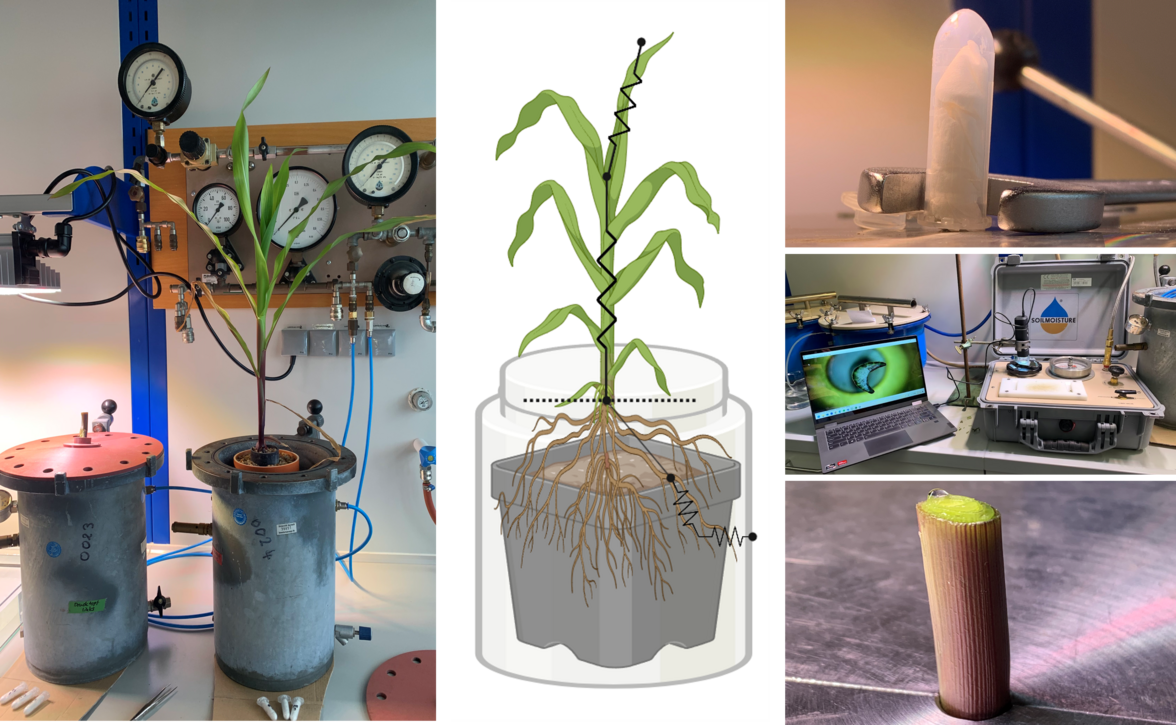Hydraulic Orchestra
From Root to Shoot: Understanding Plant Hydraulic Regulation Across Different Soil Moistures
Precise coordination of hydraulic conductance in plants, both above- (Kab) and belowground (Kbe), is crucial for meeting leaf evaporative demands as plants grow in diverse environments. This study examines how maize plants (Zea mays L.) adjust their hydraulic conductance during growth in response to varying soil water content. It is hypothesized that maize modulates their Kab and Kbe in response to plant age and soil moisture, balancing water loss with uptake.
Maize plants were grown in loamy soil under optimal (25-30% vol) and water stressed conditions (10-15% vol). At four growth stages (14, 26, 35 and 55 days after sowing), both above- and belowground hydraulic conductance were assessed. Kbe was determined by applying incremental pressure to soil and roots in a pressure pot and collecting sap to measure water flow. Measurements of transpiration, leaf water potential, temperature, and vapor pressure were taken to calculate total aboveground hydraulic conductance, effective internal aboveground xylem hydraulic conductance and stomatal conductance.
This study provides insights into the complex hydraulic regulation mechanisms in maize plants under varying water conditions. The findings will highlight the critical role of water availability in shaping plant hydraulic traits, growth dynamics, and adaptive responses. Variability in hydraulic conductance across water treatments and plant ages highlights the complexity of plant-water relations, emphasizing the necessity for a comprehensive approach to managing water use efficiency in agricultural systems.
Project Leader: Mohsen Zare
Team: Samantha Spinoso Sosa, Benjamin Hafner, Daniel-Sebastian Moser
Duration: 2024
